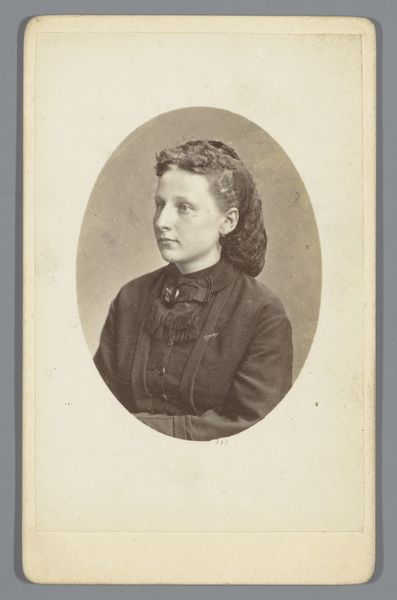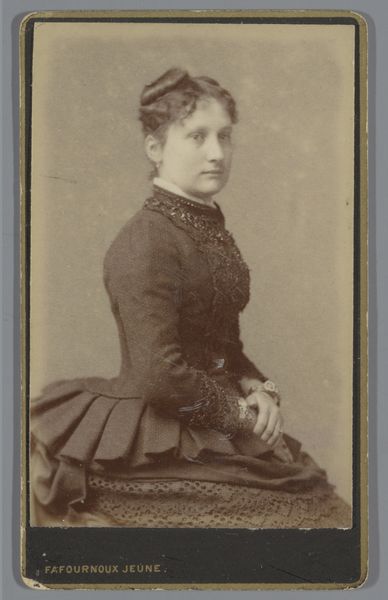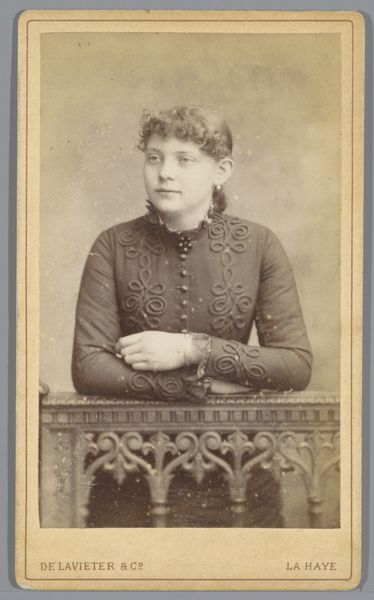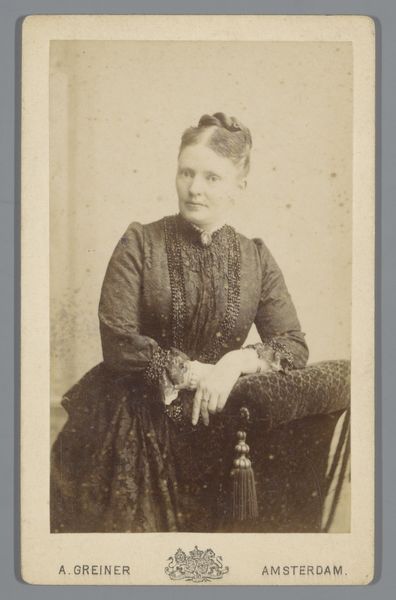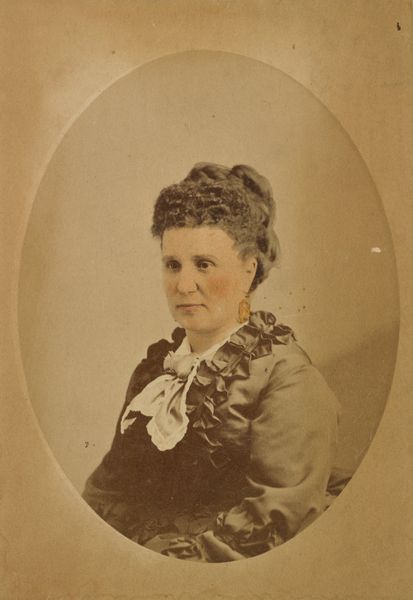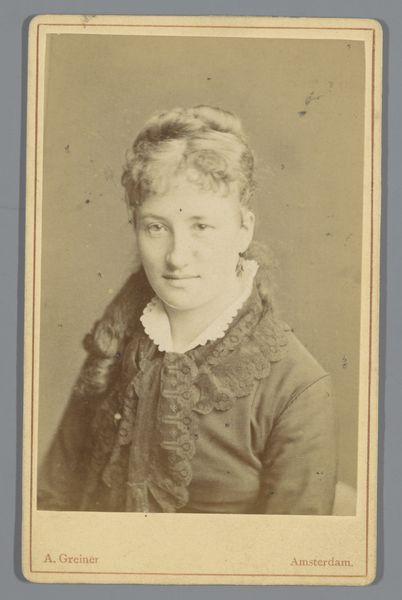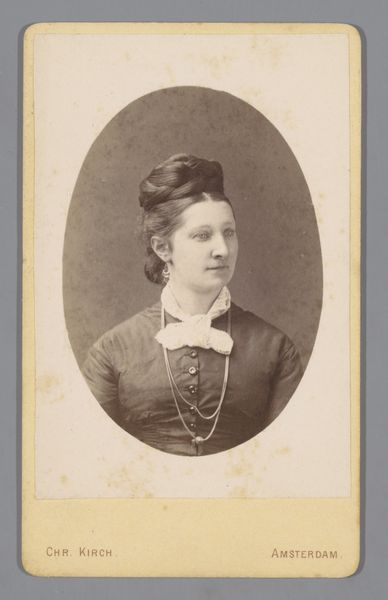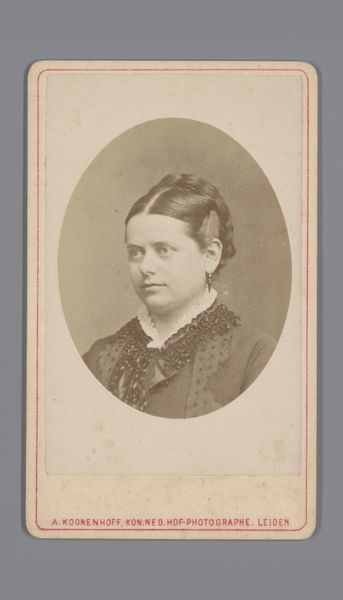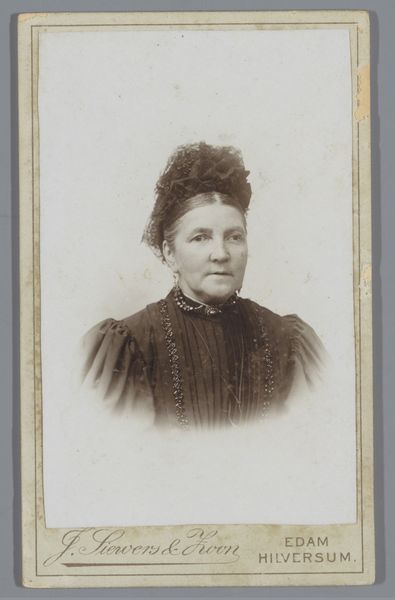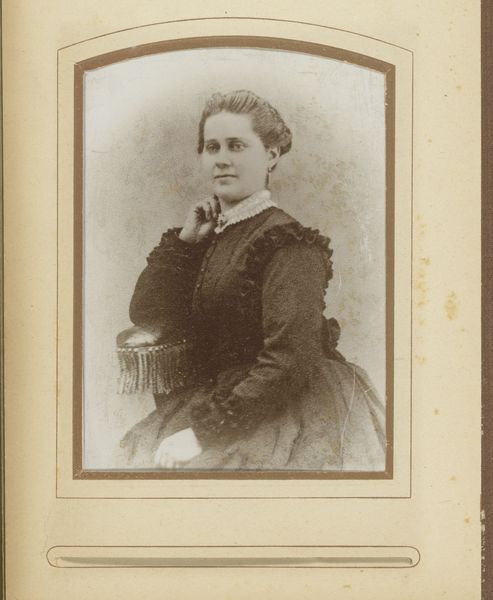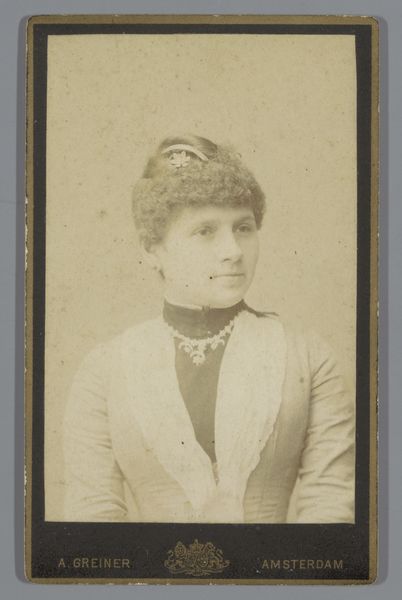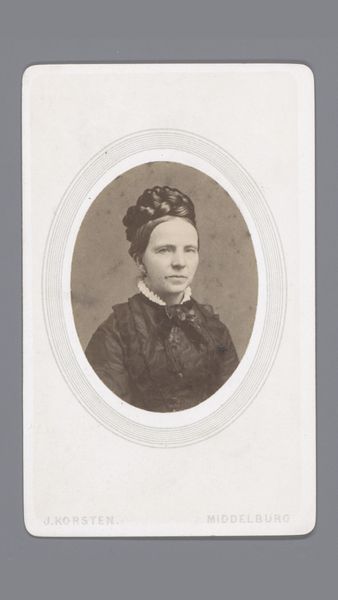
daguerreotype, photography
#
portrait
#
daguerreotype
#
photography
#
historical photography
#
historical fashion
#
19th century
Dimensions: height 101 mm, width 63 mm
Copyright: Rijks Museum: Open Domain
Curator: Here we have an early photograph, "Portret van een onbekende vrouw," taken sometime between 1860 and 1875 by Henri Ostis. It’s a daguerreotype, a very early photographic process. Editor: You know, the sepia tones give it such a timeless quality. But it’s her eyes! There’s this direct, almost challenging gaze… I feel like I’ve met her before. Maybe in a dream, or an old novel. Curator: Precisely! The direct gaze was fairly common in portraiture of the time. The process demanded a certain stillness, and direct engagement conveyed respectability. Also, the velvet bow, the ornate brooch, her carefully arranged hair – these are symbols, communicating status, refinement, and adherence to social norms. Editor: Symbols whispering across the years... That brooch, like a tiny sun. It must have been incredibly modern then, this photographic ‘capturing’ of a person’s essence. Did it feel invasive to be rendered in such detail? I mean, it's way beyond a painted portrait. Curator: Interesting you say 'invasive.' Daguerreotypes held a kind of magical power. They could capture likeness with incredible precision, a quality previously confined to detailed painting. This portrait represents a potent symbol, immortalising an otherwise unknown individual in the burgeoning age of mechanical reproduction. The studio mark "H. Osti Upsala" is a window into her probable cultural and social background, but it gives away none of her personal history, fueling even more speculation. Editor: Yes, it's fascinating to contemplate. A portal into her life, however incomplete, has somehow landed into our age. Even the imperfections are part of the mystery, blurring her personal story and reminding me of the strange persistence of time. Curator: Indeed. It shows us that every era has its ways of capturing and interpreting the human spirit. This portrait shows a beautiful merging between technological possibility and intimate rendering.
Comments
No comments
Be the first to comment and join the conversation on the ultimate creative platform.
